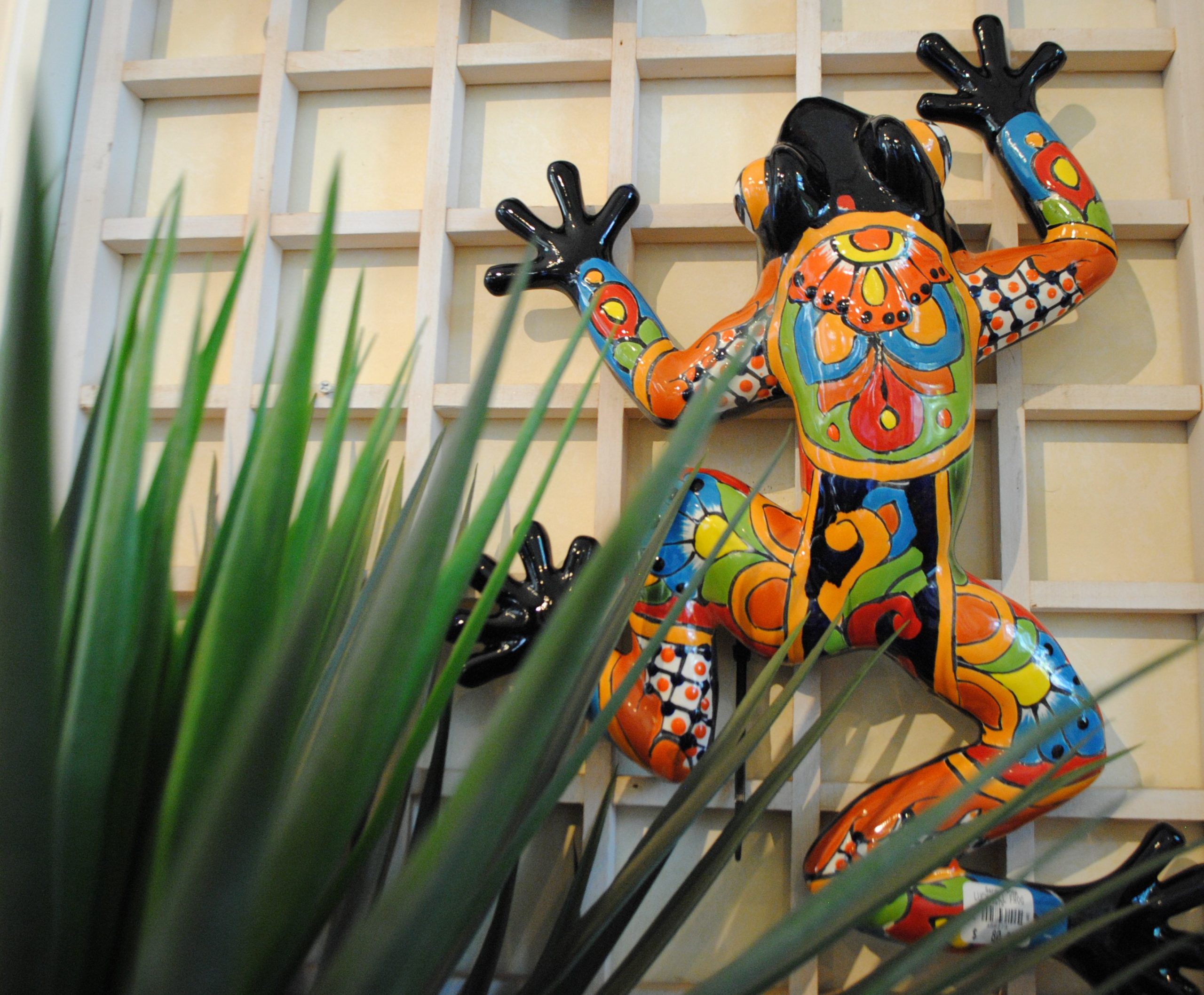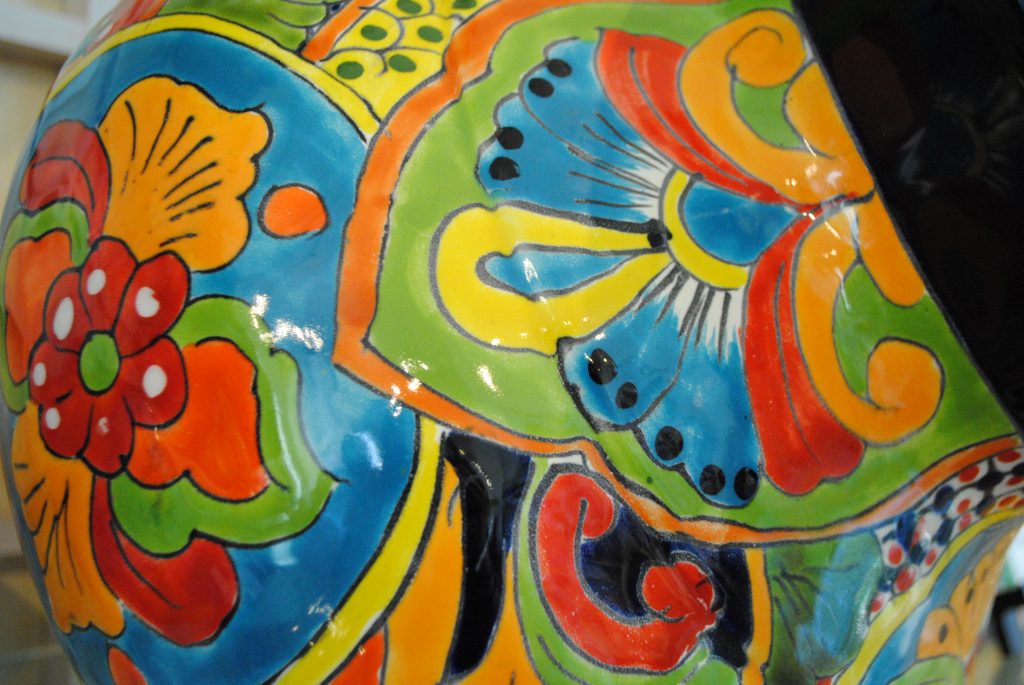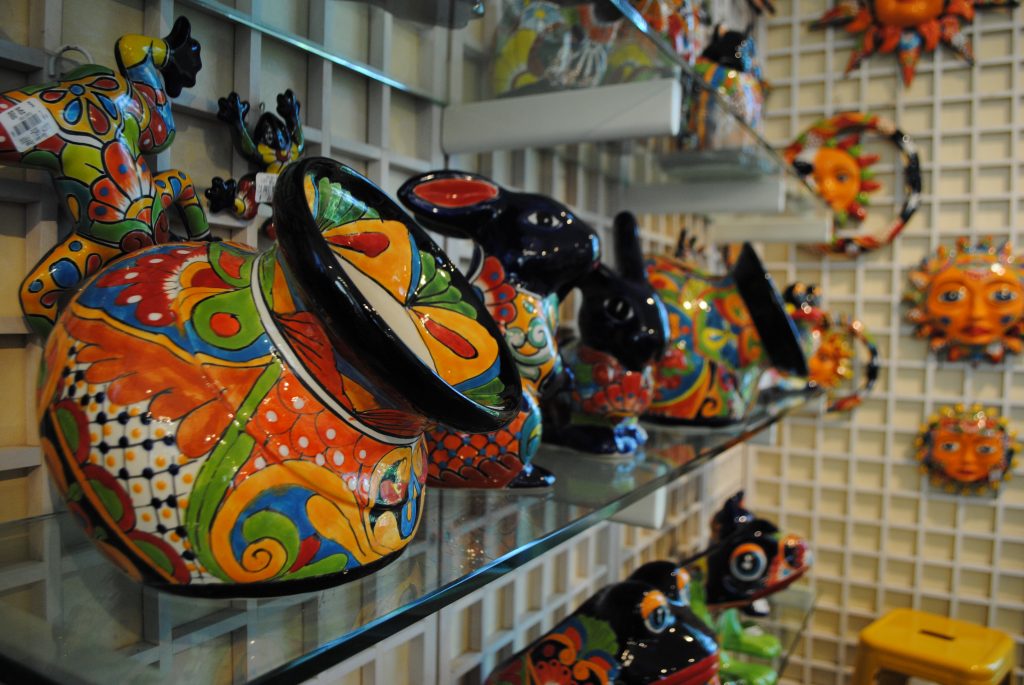Turning Earth into Art: The Significance of Talavera Pottery
When I was a kid, my parents would take me and my brother to the local authentic Mexican restaurant for enchiladas, black bean soup and chile rellenos (my personal favorite). My mother and I would spend the beginning of each meal admiring the colorful creatures on the walls. A snake slithered up to the ceiling in reds and yellows. Two robust frogs sat with intricate patterns on their backs and a welcoming sun smiled at us from above the hallway to the restrooms. Each piece had a vibrant and similar color palette of warm red and orange, yellow, green, and rich cobalt blue.
As I got older and visited more Mexican restaurants with the same style of decorations, it dawned on me that this might be a culturally significant art form. Each restaurant had different pieces on display, but they all used the same color palette and design motifs. When I finally worked up the courage to ask the wait staff about these pieces, they told me it was a collection of “special Mexican pottery.” When I started working in the Garden Shop, I realized what I had seen was Talavera pottery, and I began to learn exactly how unique it is.
What Makes Talavera Pottery So Special?
House plant lovers, gardeners and interior designers often praise Talavera pottery for its superior quality and vibrant colors. But what makes Talavera pottery different from other ceramics? The short answer: it starts with the earth. Artisans make Talavera pottery from raw materials found only in the Puebla region in Mexico, just as vineyards make Champagne from the grapes grown only in the Champagne region of France.
The History of Puebla
The city of Puebla was the first Spanish-built city in Mexico, built on the ruins of a conquered settlement in the 1500s, so it is no surprise that Talavera pottery has its roots in Spanish majolica, tin-glazed earthenware. Majolica is most recognizable by its traditional white and cobalt blue color palette. During the building of the first church in Puebla, artisans came from Talavera de la Reina in Spain to help construct the monumental building. The Spanish imparted their techniques for creating majolica to the people who inhabited the Puebla region, and local artisans began to infuse these new techniques into their existing ceramic traditions. In this way, Talavera pottery was born.
Puebla is about two hours southeast of Mexico City. The state is known for its brightly colored homes and ornate tiles and boasts an incredible view of the massive Popocatépetl volcano, the second highest peak in Mexico. Popocatépetl, which means “smoking mountain” in Aztec, is an active volcano that has been in a state of eruption for decades. Although sometimes unsettling (or intriguing) to travelers, the volcano lives up to its name and often sends out plumes of smoke, ash and gas. The volcanic activity in this region of Mexico contributes significantly to the creation of Talavera pottery. The people of Puebla harvest volcanic soil from the Puebla region and produce two types of clay: dark and light. They then use a combination of these clays to mold authentic Talavera pottery.
The Creative Process
Each piece of authentic Talavera pottery takes about a month (sometimes more) to make from start to finish, and certified studios ensure that craftspeople meet quality standards at every step of the way. Artists mold the clay, either by hand or on a pottery wheel, then fire it in a kiln heated to 800 degrees Celsius. Next, each piece is hand-painted using only six specific pigments. These pigments come from natural minerals native to the surrounding region. A thick tin glaze puts the essential touch on each piece, and a final firing process makes Talavera pottery extremely durable. Each piece is a work of art.
So the next time you dine at a Mexican restaurant, take a moment to look around and observe the intricacies of this hand-made art, which contributes so elegantly to your authentic experience. Talavera is a celebration of the beauty of the land, the culture and the people of Puebla, Mexico. All our Talavera pottery comes from Puebla and the nearby city Dolores Hidalgo.
Want to take home a piece of Talavera pottery for yourself? The Garden Shop has a wide selection of planters, statuary and wall hangings. There’s something in nearly every price range — from small figurines for less than $20, to large planters or statuary that reach nearly $200. Come see what we have in stock the next time you visit the Garden! The Garden Shop is open 10 a.m. to 5 p.m. daily.



